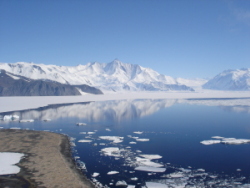At both poles: ?Warming is directly attributed to human activities?
30 Oct, 2008 07:04 pm
Alexey Karpechko works at the University of East Anglia, and is co-author of a study published in this week?s issue of Nature Geoscience that shows that the rise in Artic and Antarctic temperatures in recent decades can be attributed directly to human activities. He answers Scitizen?s questions.
 |
We used two sets of modulants, one which is forced only by natural forcings such as solar cycles and volcanoes, and another set of modulants forced by both natural and anthropogenic forcings - due to human activities -, greenhouse gases, sulphate aerosols, etc. We compared observed temperatures with these model outputs and we saw that observed warming in both polar regions cannot be reproduced by models forced by natural forcing only, but on the other hand itís in good agreement with models which are forced by both anthropogenic and natural forcings. This means that we cannot say that this warming is something that climate can do without anthropogenic forcing, so we do conclude that this warming is directly attributed to human activities.
How do you simulate human activities?
We include emissions of greenhouse gases, sulphate aerosols and some changes in land use.
We have measurements of greenhouse gases up to the middle of the 20th century, so we can model this directly for emissions starting from the mid-20th century with quite a lot of certainty. There are some uncertainties in emissions before that time, but these too can be simulated indirectly.
Which numerical models did you work with?
We used a group consisting of four models coming from UK, USA (two of them) and from Japan. So the models are quite different, and each of them produced slightly different climate, and slightly different change trends. We prefer to use several models in order to reduce uncertainties, which could be introduced by a single model. This allows us to better detect signals: if, letís say, only one model reproduces something, but not other models, then when we average through several models this signal would disappear. Only if all models reproduce something, like warming, we would see that the signal is really robust.
Do your numerical simulations allow you to predict the temperature rises at both poles in the future?
Yes, as IPCC states in the report that was issued last year, we are expecting under different climate change scenarios and gas emission scenarios, that the temperature will continue rising including both polar regions, and in Arctic we expect that the temperature will be rising at a rate twice as much as elsewhere in the globe because of the retreat of sea ice and snow cover.
Interview by Gilles Prigent and Olivia Sohr.
1 comment(s)
[1]
Comment by Global Changes
6 Apr, 2009 01:39 pm
So global warming at the poles is man made. Is there any chance of slowing the effects before its too late?
 Alert Moderator
Alert Moderator






